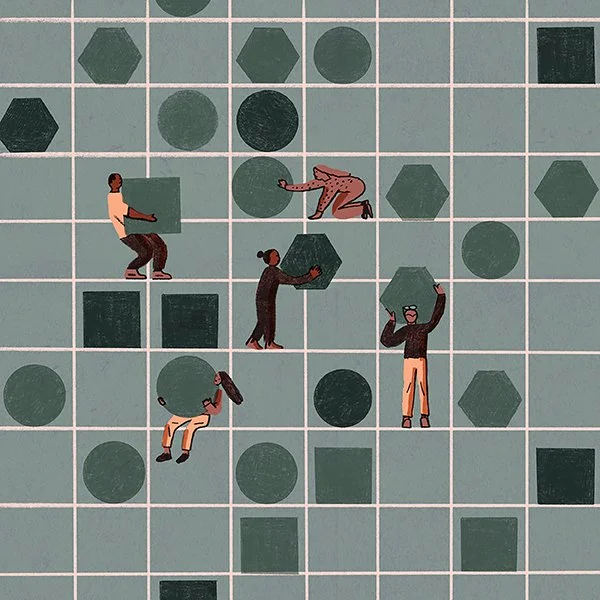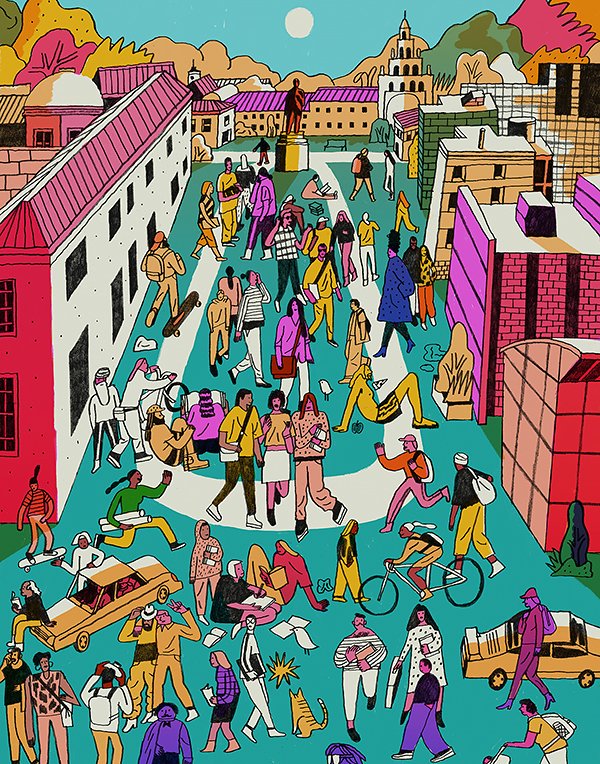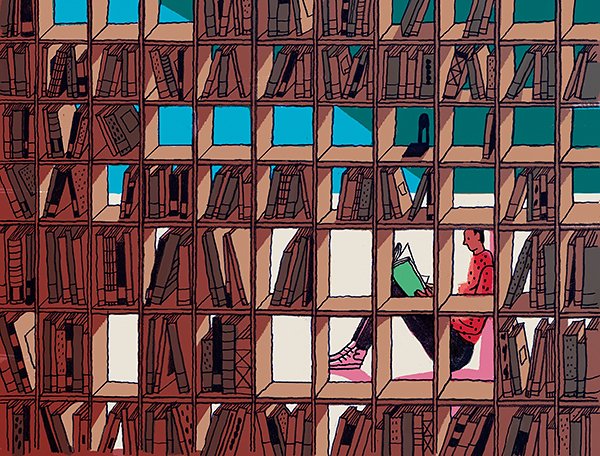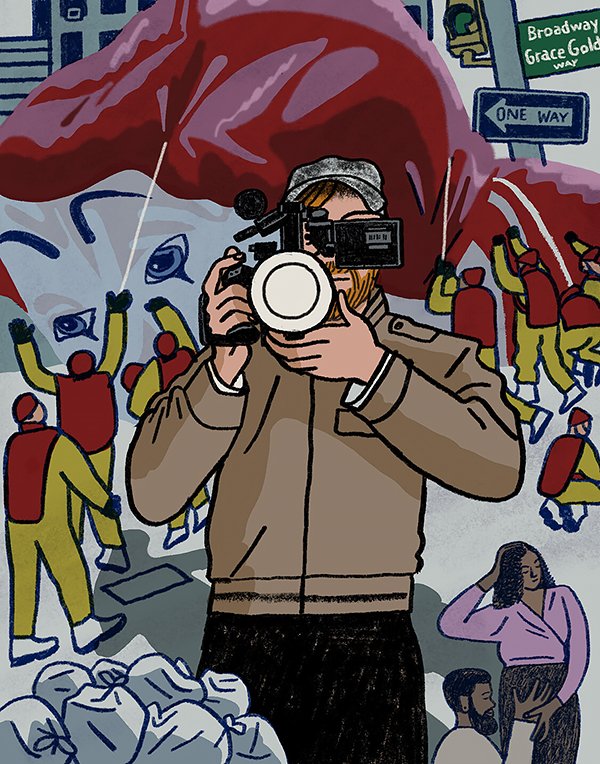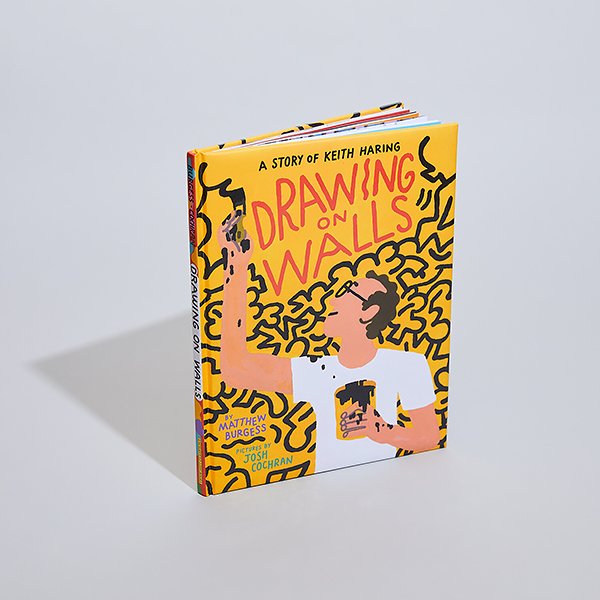The City: Josh Cochran
“When nothing seems to help, I go and look at a stonecutter hammering away at his rock, perhaps a hundred times without as much as a crack showing in it. Yet at the hundred and first blow it will split in two, and I know it was not that last blow that did it, but all that had gone before.”
Foreword
Illustrator. Art director. Muralist. Avid traveler. Marathon runner. Grammy nominee. Taiwan-born. Brooklyn-based.
Preface
I grew up in Taiwan until the 5th grade, and I always knew that I was seen as different from the rest of the kids growing up. During my early years in Taiwan, my parents worked as missionaries, and later on my Dad became a pastor of a Chinese church here in the States. I grew up in a sheltered environment, so I wasn’t exposed to Rated R movies, comic books or even non-Christian, secular, mainstream music until later in high school. Some of my earliest artistic influences come from a light pink leather bound Precious Moments Bible depicting young, dewey-eyed, pastel colored children acting out stories in the Bible. During this time, I was attending an international English school with my younger brother, and we would ride the bus everyday to the campus on the outskirts of Kaohsiung city with other missionary kids reading Hergé’s Tintin. I was obsessed. I loved the graphic simplicity of the characters placed in complex, lush backgrounds. My parents would leave my brother and I for hours alone in church while they led Sunday school and prayer meetings, and I would draw complex war scenes or memories of a vacation on a whiteboard and sit quietly listening to radio programs my grandmother would send over from America.
My family moved many times, and I would often find myself in situations where I was the new kid and had to occupy myself due to boredom or loneliness. Looking back, this is probably the reason why I became interested in art and got good at drawing, which became a safe space for me, a way of escaping my current surroundings. I knew that adults would leave me alone and hours would pass quickly, and this feeling is something I come back to time and again in my professional practice.
In 1998, I attended the School of Art & Design at USC. Here I met a professor that worked in the animation industry and became a mentor to me, encouraging me to transfer to the ArtCenter College of Design in Pasadena. I also had an internship on the set of Windtalkers, a John Woo directed movie at MGM. The art director on set was an alumni at ArtCenter, so I took all of this as a sign and transferred over at the end of my third year. At ArtCenter, I was quickly immersed in a world of art, design and got surrounded by other super talented students that left a huge impression on me. This period of four years studying illustration and art intensely changed my life. I took a printmaking class and found the process of working with a limited palette and painstaking silkscreen methods to actually be liberating. There was something comforting in following a series of clear steps in order to create an image. I couldn’t believe I could make a living from drawing and would often be plagued by feeling like an impostor. I knew my background was different from the other students and learned to mimic other acceptable artistic influences that were popular at the time in order to fit in. Our family did not have a lot of money and, in fact, I was repeatedly on the verge of dropping out due to a lack of funds. My parents were unable to save for my education on their modest incomes, so the weight of tuition and student loans were ever present. However, I was determined to work hard and grind it out and ultimately earned a full ride scholarship for half of my time at school.
After school, I took a trip out to New York and visited Steven Heller, the art director of the New York Times Book Review, who gave me my first illustration job – I cranked it out in a few days with no sketch due to his policy during that time. After that, things just started to take off. I simultaneously got hired regularly at the Op-Ed section and was able to build up my portfolio quickly. I remember getting my first check from the NYTimes for $350 and spending most of it on a fancy dinner at a French restaurant. I met a lot of really creative and interesting people out here in Brooklyn and decided to just take the plunge and move out here just two years after I graduated. I found a studio space in the Pencil Factory in Greenpoint, Brooklyn along with some other illustrators that I met during a weekly breakfast meetup that they were having – some of them were working for the Times and had studios at the Pencil Factory. These people quickly became my studio mates, so my time at that studio felt really similar to college. It was incredibly inspiring to work next to really talented people. It honed my skills and taught me valuable lessons for starting my own illustration business.
For about six years, I worked on and off as a freelance art director at the Op-Ed page at the NYTimes and learned how to communicate with editors and collaborate with other illustrators, art directors and designers there. It helped my career tremendously, and I ended up expanding my work to many corporate and tech companies. However, this impostor feeling that somehow people would discover that in fact I did not belong here would persist throughout the years. I’ve come a long way and sort of become a different person than the little kid drawing on the white board in church, yet I’ve been trying to take on projects that help me embody my 4th-grade self, so that I can still channel that long-forgotten spirit. These projects include a budding children’s book career, specifically Drawing on Walls: A Story of Keith Haring, a recent book written by Matthew Burgess that I illustrated, and a newer book set to release early 2023. I’ve also been taking on more mural and installations. These projects tend to give me a decent amount of artistic freedom and have been a great way of mimicking that liberating whiteboard-style approach from the past.
Cover of the Learning Network article | NYTimes
High Maintenance | The New Yorker
Reading | NYTimes Book Review
How To with John Wilson | The New Yorker
Drawing on Walls: A Story of Keith Haring | Enchanted Lion (2020)
Epilogue
Looking back, I realize that all of my favorite art contains elements of the unselfconscious mark, yet I find working like this to be quite challenging, especially within the confines of a client and a brief. Leaving space for improvisation and play by starting in one corner of the page and growing out without a plan can make it happen; I love the tension of careful planning and deliberate chaos. In the future, I hope to have more moments of pure focus, drawing intently for hours on end. I’ve also enjoyed teaching and consider it to be an integral part of my creative process – I teach two classes at the School of Visual Arts here in Manhattan and have loved being back in the school environment. As someone who has taken a lot from the industry, I think giving back in some way is equally important. It’s also been fulfilling to be around the younger generation in a place where I can talk about art and drawing. Many former students have become friends after graduation.
Bibliography
Ren Hang
The Forest written by Ricardo Bozzi, illustrated by Violeta Lopiz and Valerie Vidali
The City
Favorite thing about living in New York ↝ Running through Prospect Park
One thing you can't survive without in the city ↝ Noise-cancelling earbuds
Three adjectives describing New York ↝ Enduring, sticky, herbal
The most inspiring spot in the city ↝ City view from the IKEA showroom in Redhook, Brooklyn
Current obsession ↝ Everything Everywhere All At Once // The Joseph Yoakum show at the MoMA

